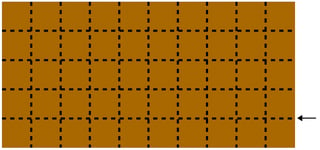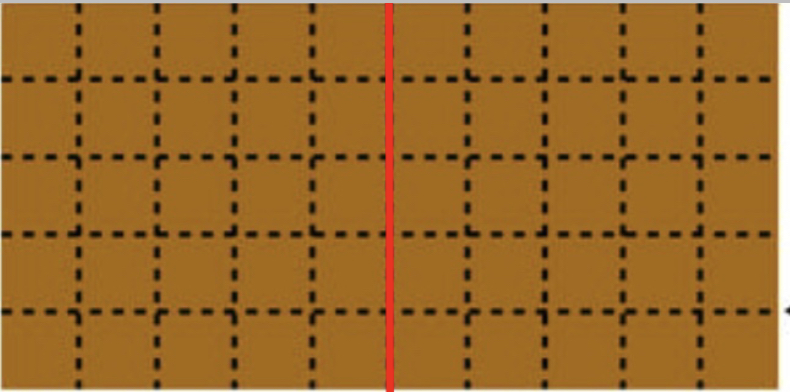Fascinatingly,
every possible move that doesn't create a width-1 strip is winning!
This is a byproduct of a general claim:
every 5×n bar with n greater than 1 has nim-value 1.
Proof: By induction.
2×2, 2×3, and 3×3 bars are our "zero games": any player who has to move in a position consisting of only these bars loses, because they are forced to create a width-1 strip. The only moves in 5×2 or 5×3 bars that don't lose immediately break them into two zero games, so these bars have nim-value 1.
For larger 5×n bars, there are two types of moves: Either split them widthwise into two smaller 5×k bars, whose nim-values of 1 cancel to yield 0, or split them lengthwise to yield a 2×n bar and 3×n bar. Player 2 loses immediately upon making any further lengthwise splits, so their only moves are widthwise splits on one of the bars, which Player 1 can match on the other bar. Since this game also has nim-value 0, 1 is the least unreachable nim-value, and thus the value of the 5×n bar.
In fact, I can prove something even stronger:
Claim: For any chocolate bar, define its row (resp. column) game to be the bar with the same number of rows (columns) and two columns (rows), and its row (column) value as the game value of the row (column) game. If both the row and column value are nonzero, the bar's value is 1; otherwise, the bar's value is the greater of the row and column values.
Proof: The claim is true for bars with two rows and/or columns, by definition and the fact that the game value of a 2-by-2 bar is 0. Assume the claim holds for all bars that can be broken off from a given bar.
There are three cases:
1. Both the row and column values are nonzero numbers, say, R and C.
Any reduction in rows creates two positions with values either 1 or C. No such move can create a position with value 1; either a move creates two positions with value C, with sum 0, or a position with value 1 and another position with nonzero value, whose sum cannot be 1. There must be at least one reduction in rows that creates two equal-value positions, because otherwise no such move would exist in the row game, and its value would be 0, a contradiction. By an analogous argument on columns, we can conclude that the bar's value is 1.
2: Both the row and column values are 0.
The values reachable by reducing rows are precisely those reachable in the row game, by assumption, and likewise for reducing columns. Since neither game can produce a position with zero value (else its value would be nonzero, a contradiction), neither can the full bar, and so its value is 0.
3: Exactly one value is zero. W.L.O.G. the column and row values are 0 and R, respectively.
Any value reachable in the row game can be reached in the full bar by reducing rows, so the value of the bar cannot be less than R. The only values reachable by reducing columns are sums of two values that are either 1 or R; since none of these can equal R, the value of the bar cannot be greater than R either, and must be equal to it.








